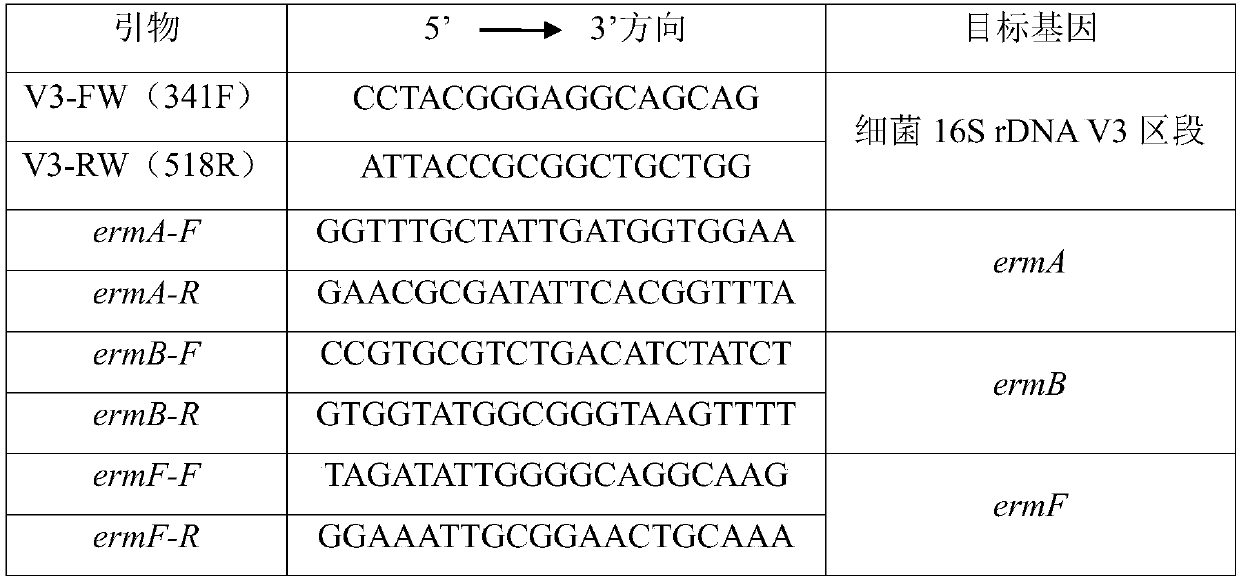Method for reducing macrolide drug resistance gene abundance in livestock and poultry excrement
A technology of macrolides and livestock and poultry manure, which is applied in animal husbandry, preparation of organic fertilizers, and treatment of invertebrates. It can solve the problem of different ability to remove drug-resistant genes and achieve the reduction of macrolides The effect of drug resistance gene abundance, reduced release, and high economic benefit
- Summary
- Abstract
- Description
- Claims
- Application Information
AI Technical Summary
Problems solved by technology
Method used
Image
Examples
Embodiment 1
[0029] A method for reducing the abundance of macrolide drug-resistant genes in livestock and poultry feces, the process of which is:
[0030] (1) Naturally air-dry the collected fresh pig manure to reduce its moisture content; then add straw fragments with a length of about 2 to 3 cm, and control the moisture content of the mixed material;
[0031] (2) Naturally compost the mixed material in step (1); after the natural composting ends, the compost material is laid to a height of 15-18cm;
[0032] (3) Inoculate the chrysalis Eisenia earthworm in the compost material of step (2), and then lay a layer of soil with a thickness of 2 to 3 cm on the surface of the compost material; and control the moisture content of the compost material;
[0033] (4) Put the compost material inoculated with Eisenia chinensis in a cool and ventilated place, keep the temperature at 22-27°C, replenish water regularly to keep the moisture content of the material at 60-70%, and turn the compost every th...
PUM
| Property | Measurement | Unit |
|---|---|---|
| length | aaaaa | aaaaa |
| length | aaaaa | aaaaa |
| height | aaaaa | aaaaa |
Abstract
Description
Claims
Application Information
 Login to View More
Login to View More - Generate Ideas
- Intellectual Property
- Life Sciences
- Materials
- Tech Scout
- Unparalleled Data Quality
- Higher Quality Content
- 60% Fewer Hallucinations
Browse by: Latest US Patents, China's latest patents, Technical Efficacy Thesaurus, Application Domain, Technology Topic, Popular Technical Reports.
© 2025 PatSnap. All rights reserved.Legal|Privacy policy|Modern Slavery Act Transparency Statement|Sitemap|About US| Contact US: help@patsnap.com


